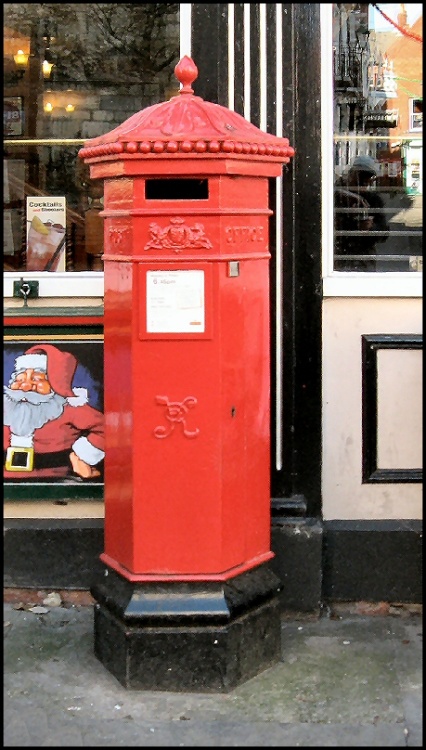 |
Victorian Postbox, Exchequer Gate, Lincoln This old postbox can be found midway between Lincoln Castle and Lincoln Cathedral in Exchequer Gate. Very few of this design are still about. This picture appears in the following picture tours: Camera Make: Canon� Model: Canon PowerShot A540� |
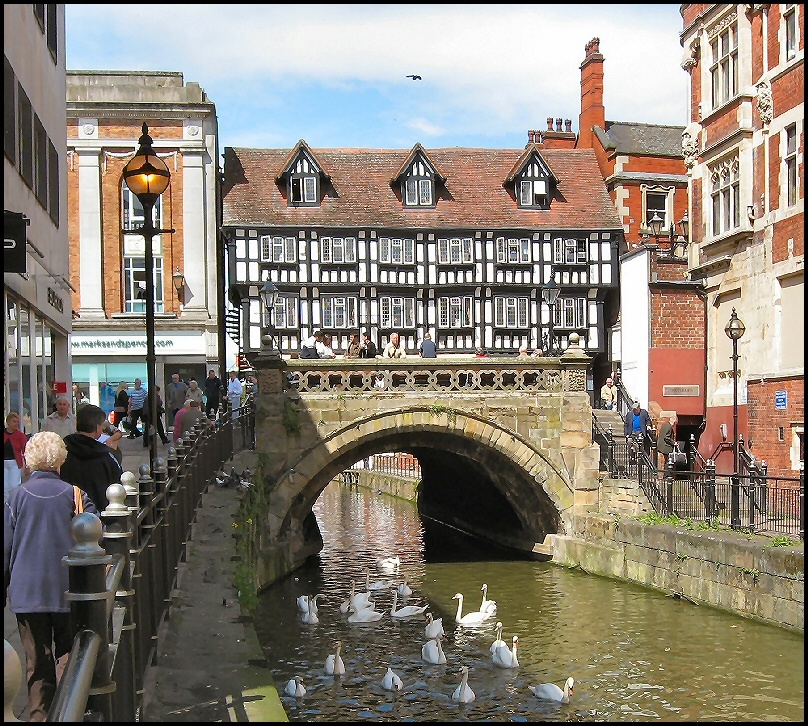 |
Lincoln, Lincolnshire The High Bridge on Lincoln High Street dates from 16th century and carries the road, once one of the two main routes through the centre of Lincoln, over the River Witham. The area is now pedestrianised. The bridge is the only one in Britain still in use today with a secular a medieval building still standing on it and incorporated in its structure are the stone ribs of what is believed to be the second oldest masonry arch bridge in the country. Built of stone with later brickwork, the bridge has been extended in various stages - including an extension to accommodate a chapel in 1235 and a range of timber buildings in 1540-50. The original timber frame house was stripped down to the bare timbers in 1901-2 and completely restored to what is seen here. This picture appears in the following picture tours: Camera Make: Canon� Model: Canon PowerShot A540� 11 people have added this picture to their favourites |
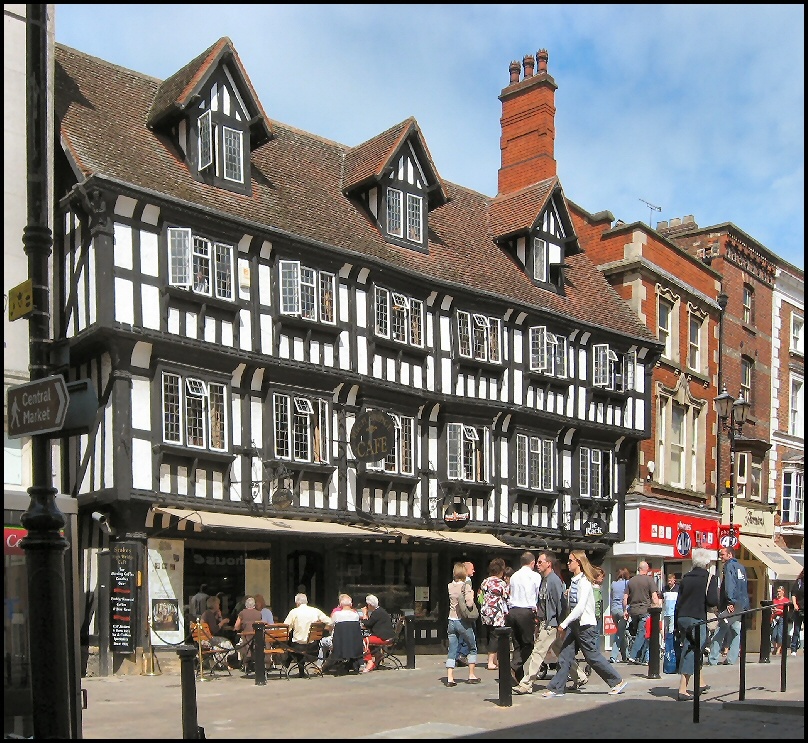 |
Lincoln, Lincolnshire The High Bridge on Lincoln High Street dates from 16th century and carries the road, once one of the two main routes through the centre of Lincoln, over the River Witham. The area is now pedestrianised. The bridge is the only one in Britain still in use today with a secular a medieval building still standing on it and incorporated in its structure are the stone ribs of what is believed to be the second oldest masonry arch bridge in the country. Built of stone with later brickwork, the bridge has been extended in various stages - including an extension to accommodate a chapel in 1235 and a range of timber buildings in 1540-50. The original timber frame house was stripped down to the bare timbers in 1901-2 and completely restored to what is seen here. This picture appears in the following picture tour: Camera Make: Canon� Model: Canon PowerShot A540� |
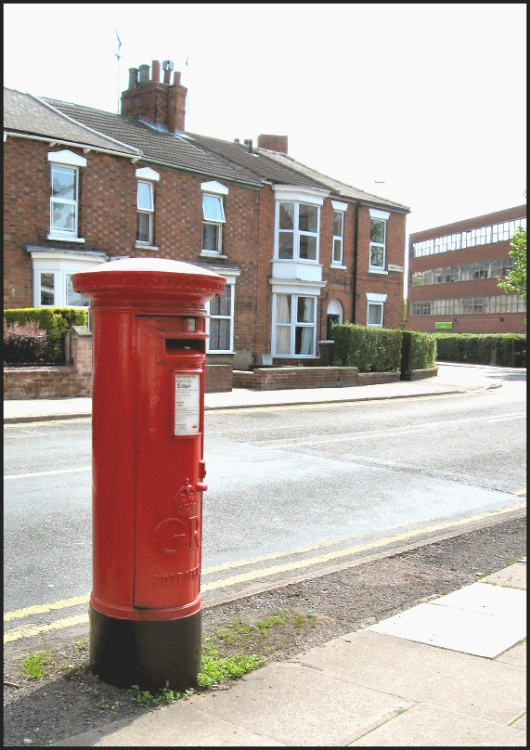 |
George V Postbox,Yarborough Road, Lincoln Another of Lincoln's old postboxes located on Yarborough Road near it's junction with West Parade. This picture appears in the following picture tours: |
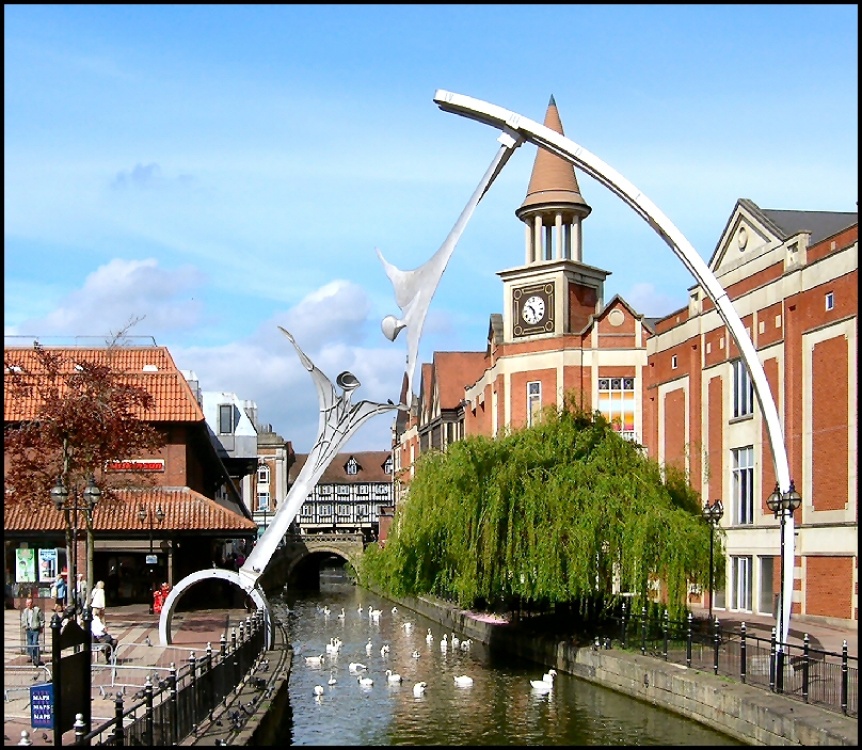 |
A picture of Lincoln The River Witham, Lincoln. The River Witham flows for almost it's entire length through the county of Lincolnshire rising south of Grantham and flowing into The Haven, a tidal arm of The Wash, and thence into the North Sea. Entering into Lincoln from the south it passes through the Lincoln Gap, a break in the limestone escarpment that runs roughly north-south through Lincolnshire, and turns and heads off to the east. The section of the river through Lincoln tends to be canalized, as can be seen in this shot, both to protect the banks and for the convenience of the barges that at one time plied between Lincoln and Boston carrying grain to the many mills that were situated alongside the river as it entered Lincoln and beside the Brayford Pool. Not only were there many mills along the river side but alehouses too to satisfy the thirst of the bargees. In the short distance that can be seen in this shot were the Lord Nelson Inn, Spread Eagle Vaults, Saracen's Head Tap, Labourer's Arms, Witham Inn & the Gardeners' Arms. The bridge crossing the river with buildings on it is The High Bridge, is on the High Street and there yet more drinking establishments could be found. The slum dwellings in this area and the pubs were demolished many years ago, the mills lasted a little longer although no mills now remain although I can recall barges unloading when I was young. Now the only traffic on the river is pleasure craft. This picture appears in the following picture tours: Camera Make: NIKON� Model: E4600� |
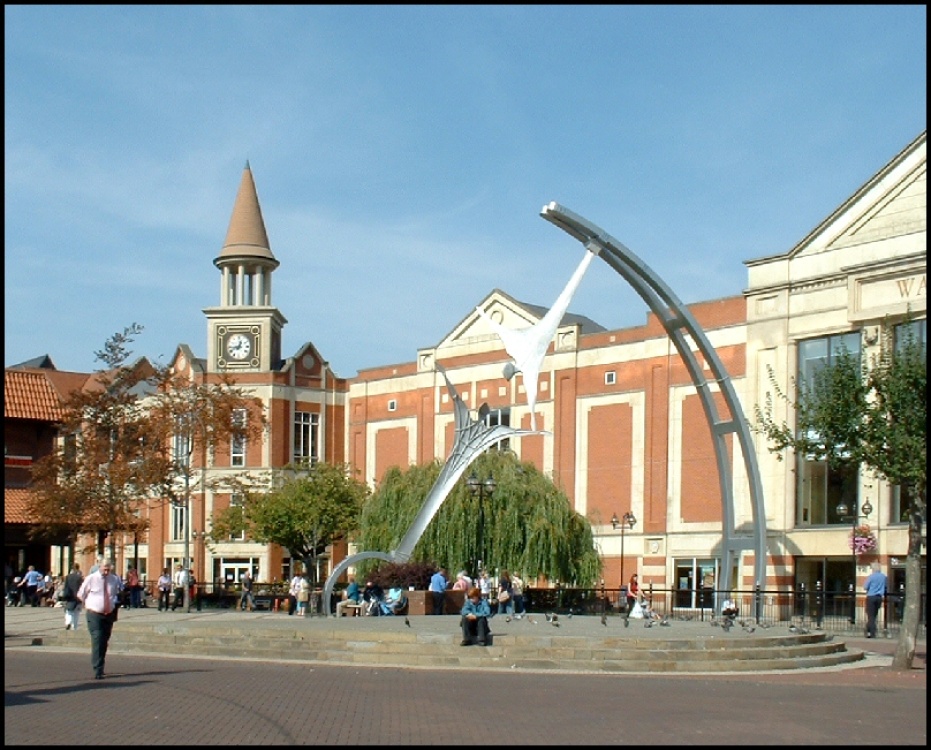 |
A picture of Lincoln City Square, Lincoln. Adjacent to the Market Hall and running down to the River Witham is City Square. Lincoln has two daily markets, inside (covered) and outside offering a traditional mix of goods with Farmers Markets offering the best of Lincolnshire produce held in the square on a monthly basis. In the background can be seen Lincoln's Empowerment Sculpture which spans the river from City Square across to The Waterside Centre, a modern and popular shopping mall on the north bank of the river. This picture appears in the following picture tours: Camera Make: FUJIFILM� Model: FinePix2600Zoom� |
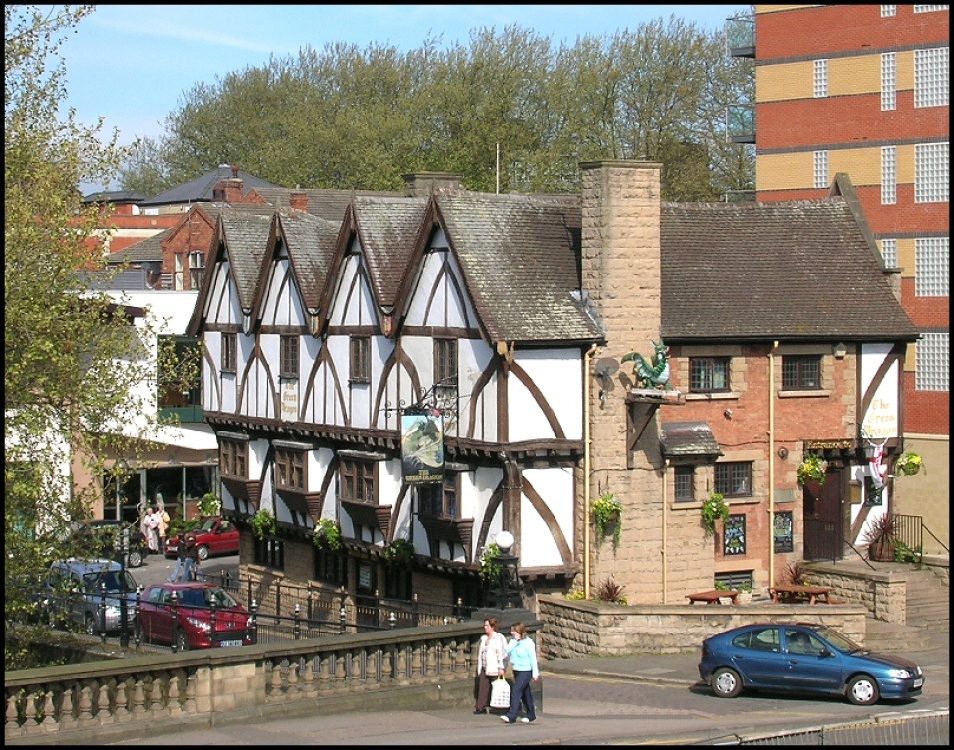 |
A picture of Lincoln The Green Dragon, Waterside North, Lincoln. Steeped in history the Green Dragon, located beside the River Witham in the centre of Lincoln, is one of the city's oldest pubs and whilst it's known history goes back to 1791 Phillip Lindsay in one of his books mentions "that while Henry VIII stayed at the Bishop's Palace some members of the court were lodged at the Green Dragon near the silver Witham", that would be around 400 years ago. The building which was stripped down to almost a timber skeleton just over 50 years ago in a major restoration now regrettably stands dwarfed by a modern apartment block. This picture appears in the following picture tours: Camera Make: NIKON� Model: E4600� |
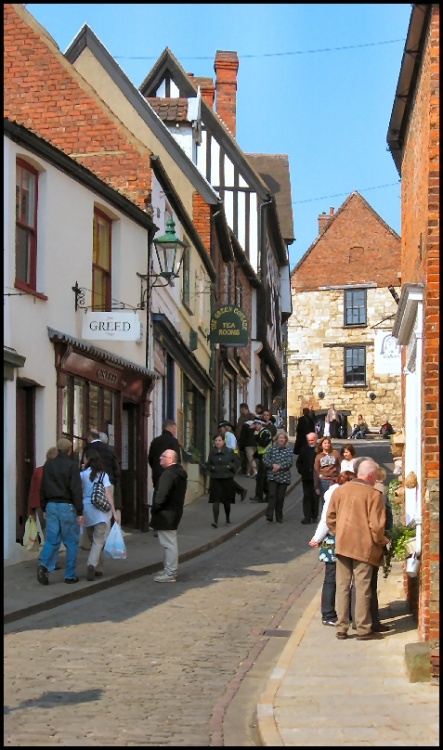 |
A picture of Lincoln The cobbled Steep Hill in Lincoln is aptly named. It is in the older part of Lincoln and is flanked with historic properties dating back to 12th century. This picture appears in the following picture tours: Camera Make: Canon� Model: Canon PowerShot A540� 2 people have added this picture to their favourites |
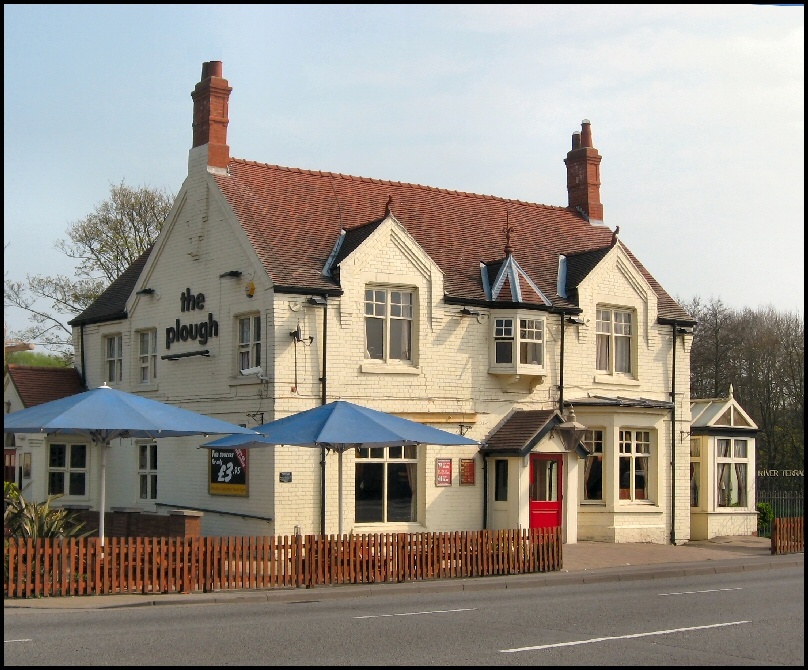 |
The Plough, Newark Road, Lincoln. This picture appears in the following picture tours: Camera Make: Canon� Model: Canon PowerShot A540� |
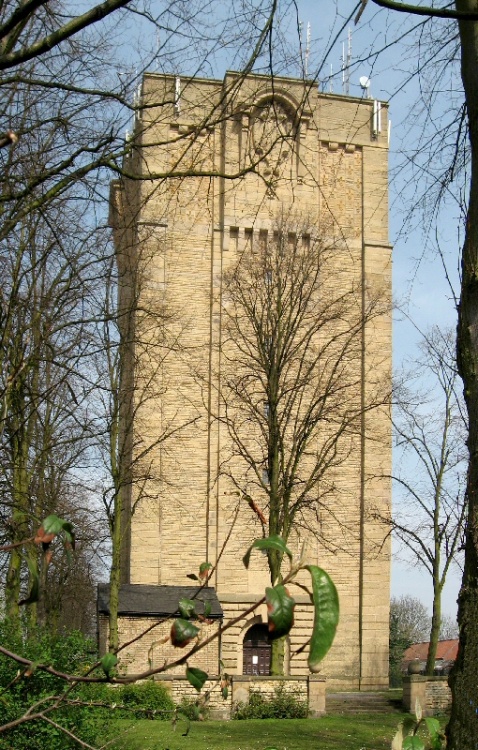 |
A picture of Lincoln The Water Tower, Westgate, Lincoln Between November 1904 and April 1905, 1006 people in Lincoln contracted typhoid and of these 113 died. It was Lincoln's biggest peacetime tragedy. The outbreak of the disease was caused by a polluted supply of drinking water, which at the time was taken from a reservoir at Hartsholme (on the edge of the city) and from the River Witham. Despite heavy chlorination of the water public faith in the supply dwindled and many resorted to drawing water from ancient wells. Faced with a crisis situation, city officials and the Water Board realised that the provision of clean water and proper sanitation would be the only way to curb the disease and restore the residents' faith in the public water supply. The first step was to find a suitable source clean water, this was located over the county border at Elkesley in Nottinghamshire where bore holes were sunk through the limestone. (The cores from the boreholes can be seen in this shot taken in The Arboretum in Lincoln). A 22-mile long main was laid from Elksley to Lincoln, where the construction of the Westgate Water Tower was Commissioned by the Lincoln Corporation. The architect, Sir Reginald Blomfield (1856-1942), designed the tower to resemble a medieval keep so as to give a sense of continuity with the city's castle and cathedral. On its completion the Westgate Water Tower had an immediate impact on the city. The local paper "The Lincolnshire Echo" recorded an "air of excitement in the city in anticipation of a new supply of drinking water". This mammoth project was not completed until 1911. Still in use today and a principle source of water for uphill Lincoln the tower, holding some 330,000 gallons (1,356,000 ltrs), remains an imposing landmark visible from miles away. This picture appears in the following picture tours: Camera Make: Canon� Model: Canon PowerShot A540� |
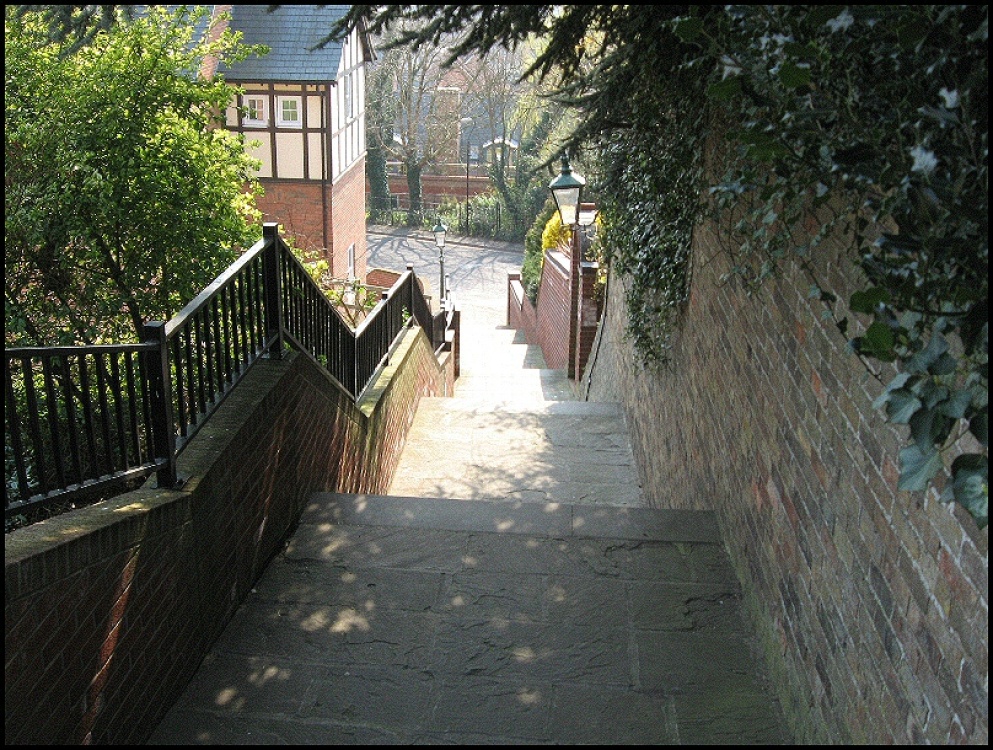 |
A picture of Lincoln Gibraltar Hill, Lincoln A little used (these days) pedestrian way from the older uphill area of Lincoln to the lower town is via Gibraltar Hill which runs from Drury Lane, just off castle Square, to Spring Hill. The old badly worn & sloping steps which were once there have been replaced with modern paving, a new series of steps and a altogether wider pathway. The housing on the left is new, at one time two rows of old terraced workers houses with a little corner shop on the end nearest Gibraltar Hill ran along the slope almost parallel to Spring Hill seen in the distance. On the other side of Spring Hill you catch a glimpse, through the trees, of what was Spring Hill Girls Secondary School now converted into seven elegant stylish city centre homes. This picture appears in the following picture tours: Camera Make: Canon� Model: Canon PowerShot A540� |
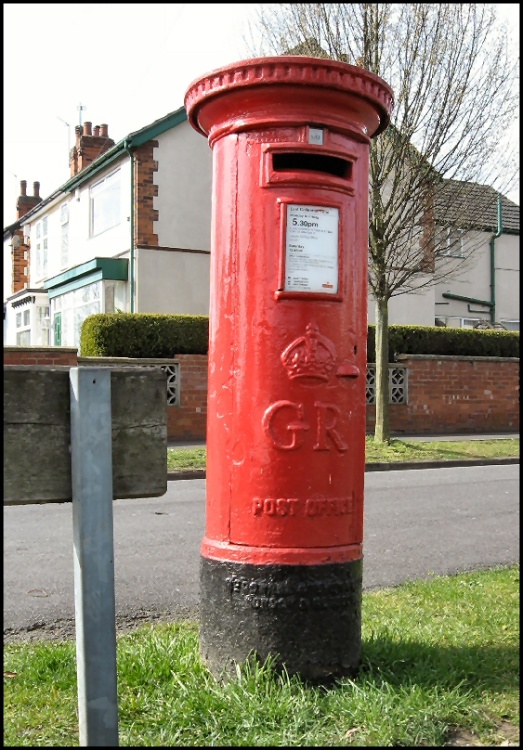 |
George V Postbox, Church Drive, Lincoln This picture appears in the following picture tours: Camera Make: Canon� Model: Canon PowerShot A540� |
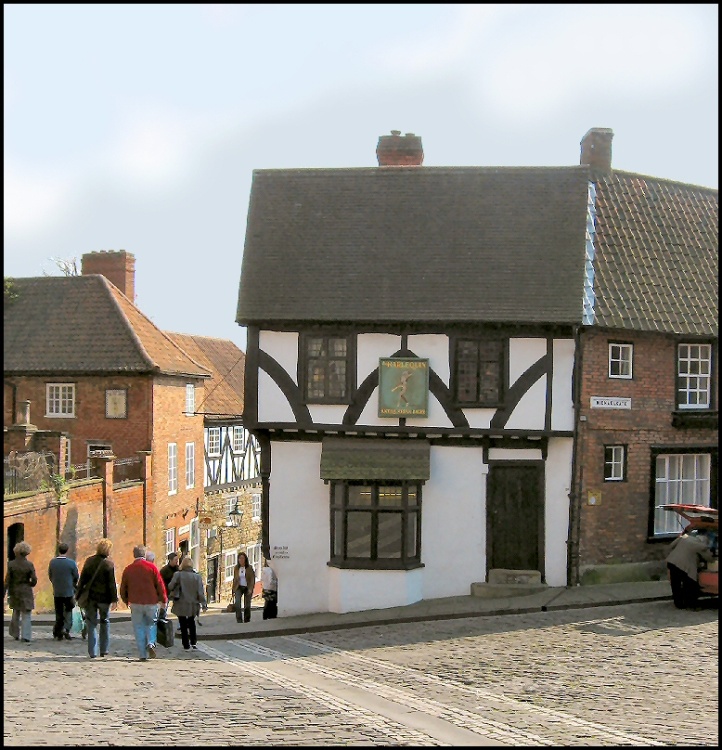 |
A picture of Lincoln The Harlequin, Steep Hill, Lincoln. The Harlequin, only a stones throw away from Lincoln's first theatre which opened in Drury Lane in 1744, was a regular drinking haunt of the theatre folk. Although looking like a typical late 15th century timber-framed building some of the interior dates back to the 12th century. Although still sporting the Harlequin sign the building is now an antiquarian & second-hand book shop. This picture appears in the following picture tours: Camera Make: Canon� Model: Canon PowerShot A540� 2 people have added this picture to their favourites |
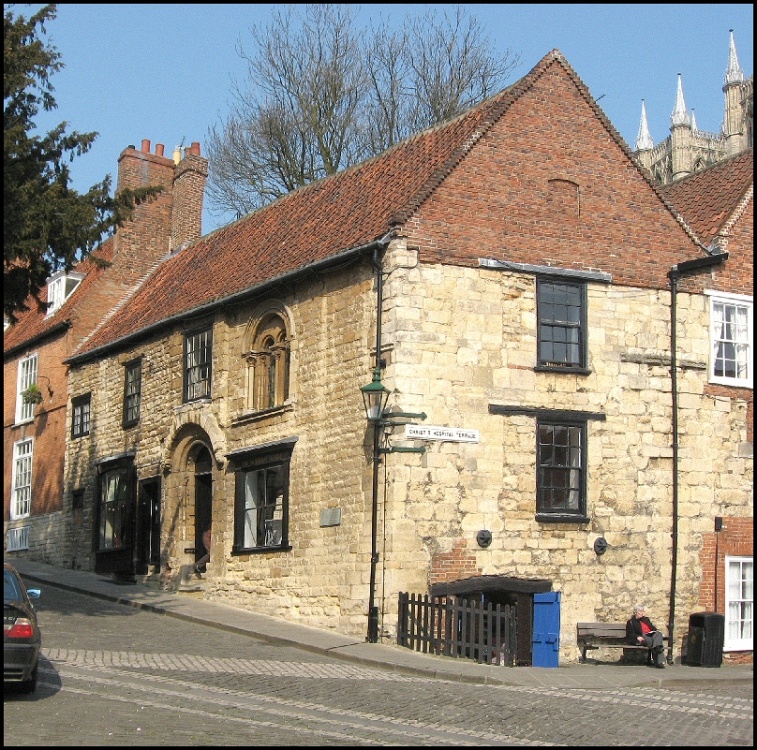 |
A picture of Lincoln The Norman House on Steep Hill, Lincoln, dates from the end of the 12th century and was one of the first stone house to be built on Steep Hill and is a rare example of Norman domestic architecture. It originally had shops on the ground floor and domestic quarters above and to the rear. The first recorded inhabitant was one Joceus of York (although very little is known about him). Although much restored many of the early architectural features remain including the Norman window & doorway. This picture appears in the following picture tours: Camera Make: Canon� Model: Canon PowerShot A540� 2 people have added this picture to their favourites |
 |
A picture of Lincoln St. Matthias church on Burton Road, Lincoln, was built in 1890-1 as a chapel of ease to the Anglican St. Nicholas church in Newport. On 28th September 1940 the south side of the church, seen in this shot, including the vestry, was destroyed when a Hampden bomber from 83 Squadron based at RAF Scampton crashed onto it. The damage could have been far worse however, it wasn't until the following day that the area was cordoned off when it was realised that the aircraft still had a live bomb on board which fortunately hadn't exploded. The Hampden had flown home on one engine following a raid on U-boat bases at Lorient in France and was only 5 miles short of the base. The crew of four had baled out, but the pilot - Pilot Officer Dudley Snook (20) in trying to avoid civilian casualties by nursing the stricken aircraft beyond the city limits probably left it too late bailing out too low. His parachute failed to open in time and he landed less than 100 yards away from the crash. He is buried in the churchyard at Scampton. The church was patched up with corrugated iron until the damage was repaired after the war. Despite the damage the church continued to be used every week by the soldiers at the nearby barracks for their Sunday morning church parades. The church is now used for worship by members of The Antiochian Orthodox Church. This picture appears in the following picture tours: Camera Make: FUJIFILM� Model: FinePix S602 ZOOM� 1 person has added this picture to their favourites |
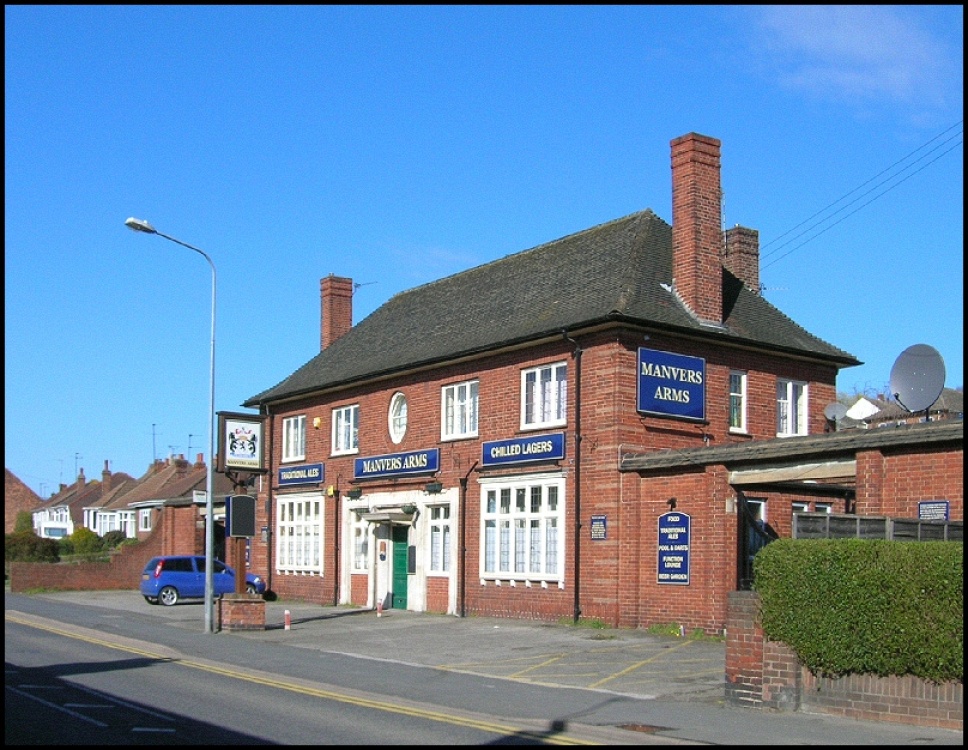 |
A picture of Lincoln Manvers Arms, Monks Road, Lincoln, Lincolnshire. A relatively modern pub dating from 1934 and originally called the 'New Manvers' built in an area of tightly packed terraced houses many of which were at the time it was built occupied by workers from the nearby heavy engineering works. This picture appears in the following picture tours: Camera Make: NIKON� Model: E4600� |
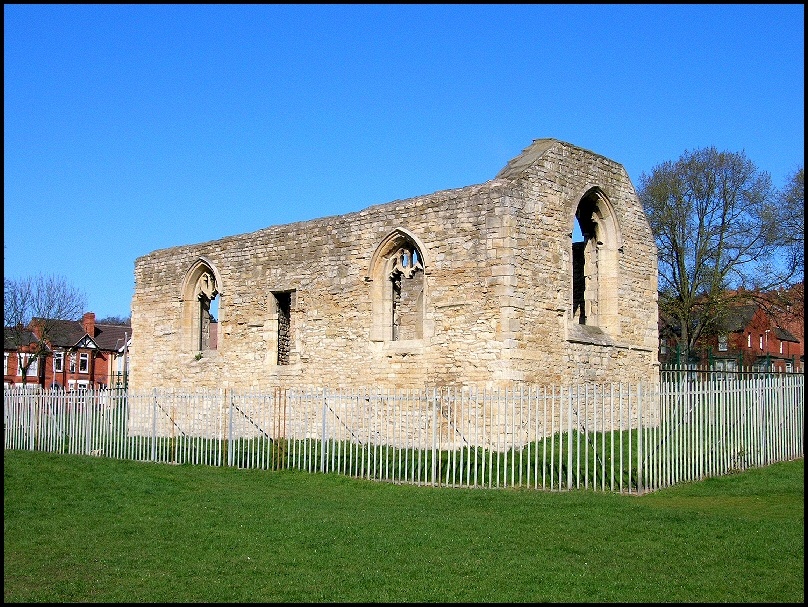 |
A picture of Lincoln The Abbey on Monks Road in Lincoln, Lincolnshire, was a cell of St. Mary's Abbey at York which belonged to the Benedictine Order. The community at Lincoln consisted of just a Prior and three monks. The religious order was dissolved by Henry VIII who appropriated the lands and the building fell into ruin. At one time standing beside a leafy lane in open fields above the River Witham the Abbey site has been engulfed by the city which during the 19th century experienced rapid industrial growth and major population expansion which led to large amounts of tightly packed terraced housing being developed in the city's east end. This picture appears in the following picture tour: Camera Make: NIKON� Model: E4600� |
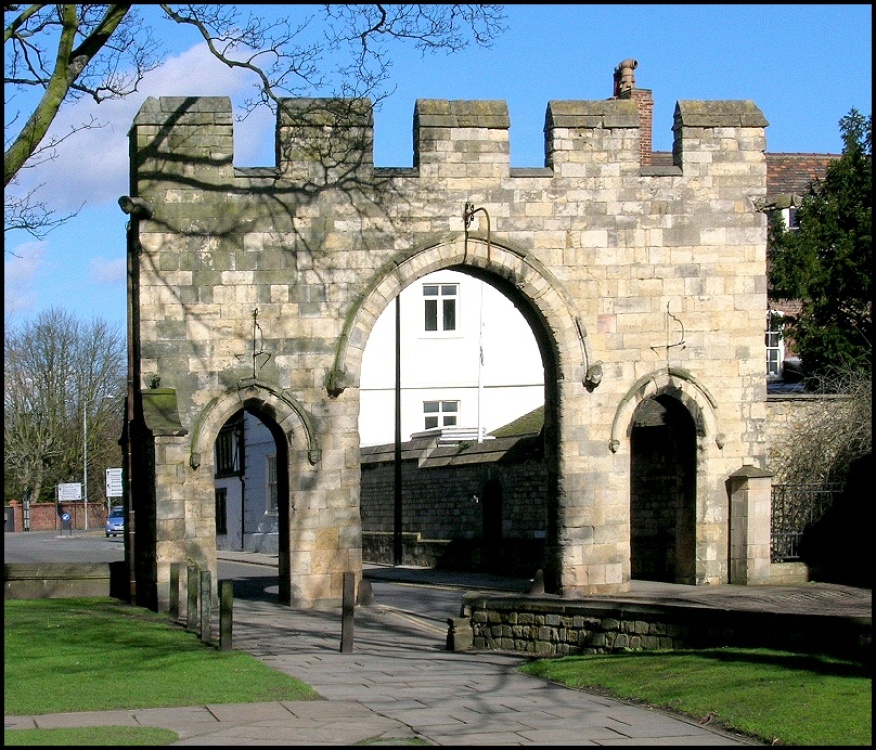 |
A picture of Lincoln Priory Gate, Lincoln In 1285, to protect it's properties, the Lincoln Cathedral community built a high wall to enclose them. This is Priory Gate but this is not an original gate.It is a plain modern arch erected in 1816 as a substitute for the two gateways destroyed a year earlier. This picture appears in the following picture tours: Camera Make: NIKON� Model: E4600� |
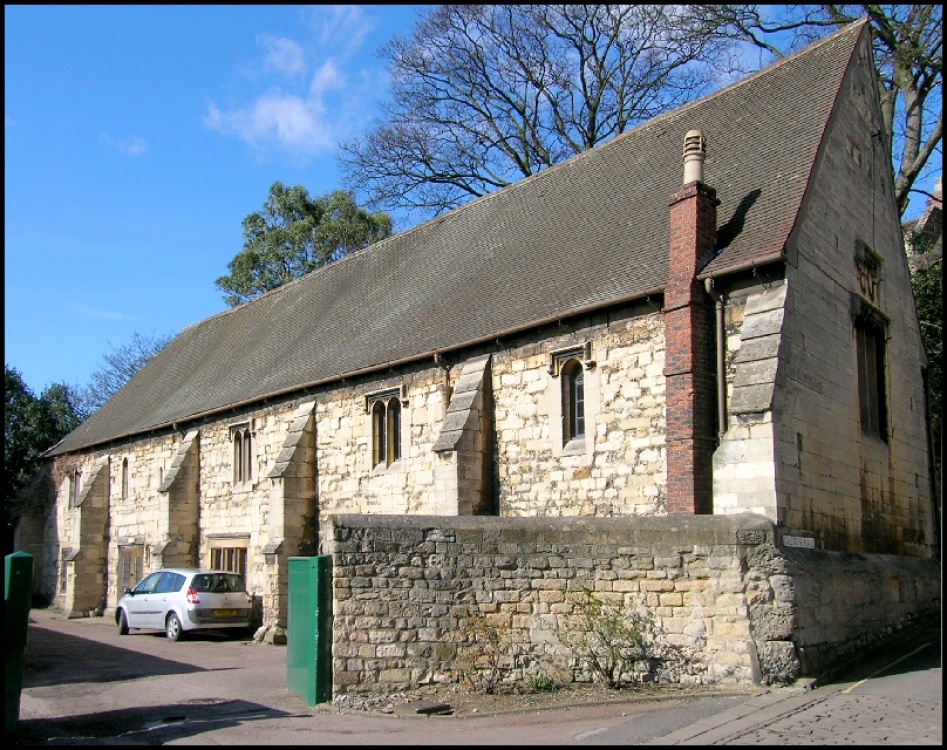 |
A picture of Lincoln Tithe Barn, Vicar's Court, Lincoln The Tithe Barn in Vicar's Court dates from around 1440. It was badly damaged during the Civil War when Cromwell's Troops stormed through the area. Connected, as the barn was to the Cathedral, both the barn and the Cathedral itself were treated as enemy property. Originally the barn would have been a warehouse but features inside suggest that at some time it may have been an infirmary or refectory. More recently it served as the dining room and kitchen to the Lincoln Girl's School which was located on the hill just below it. It now forms part of the University of Lincoln's School of Art & Design. This picture appears in the following picture tours: Camera Make: NIKON� Model: E4600� |
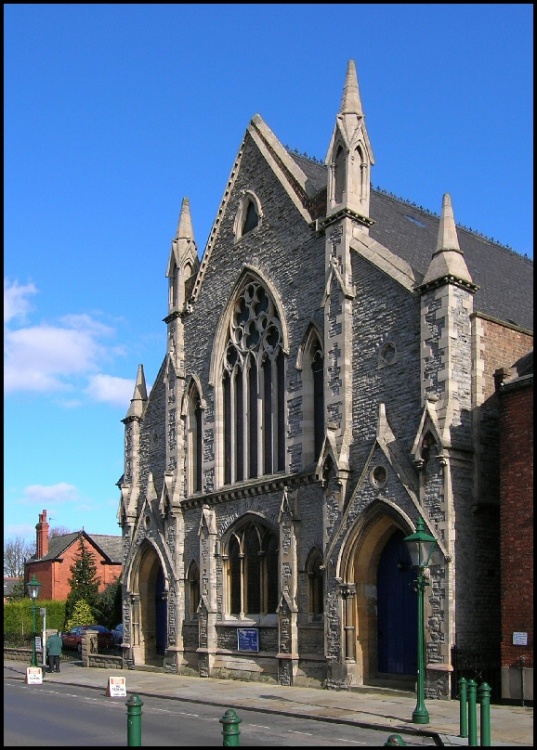 |
A picture of Lincoln Bailgate Methodist Church, Lincoln, was opened in June 1880 in the already historic area of uphill Lincoln - The church lies just within the walls of the Roman Colonia close to Newport Arch. This picture appears in the following picture tours: Camera Make: NIKON� Model: E4600� |